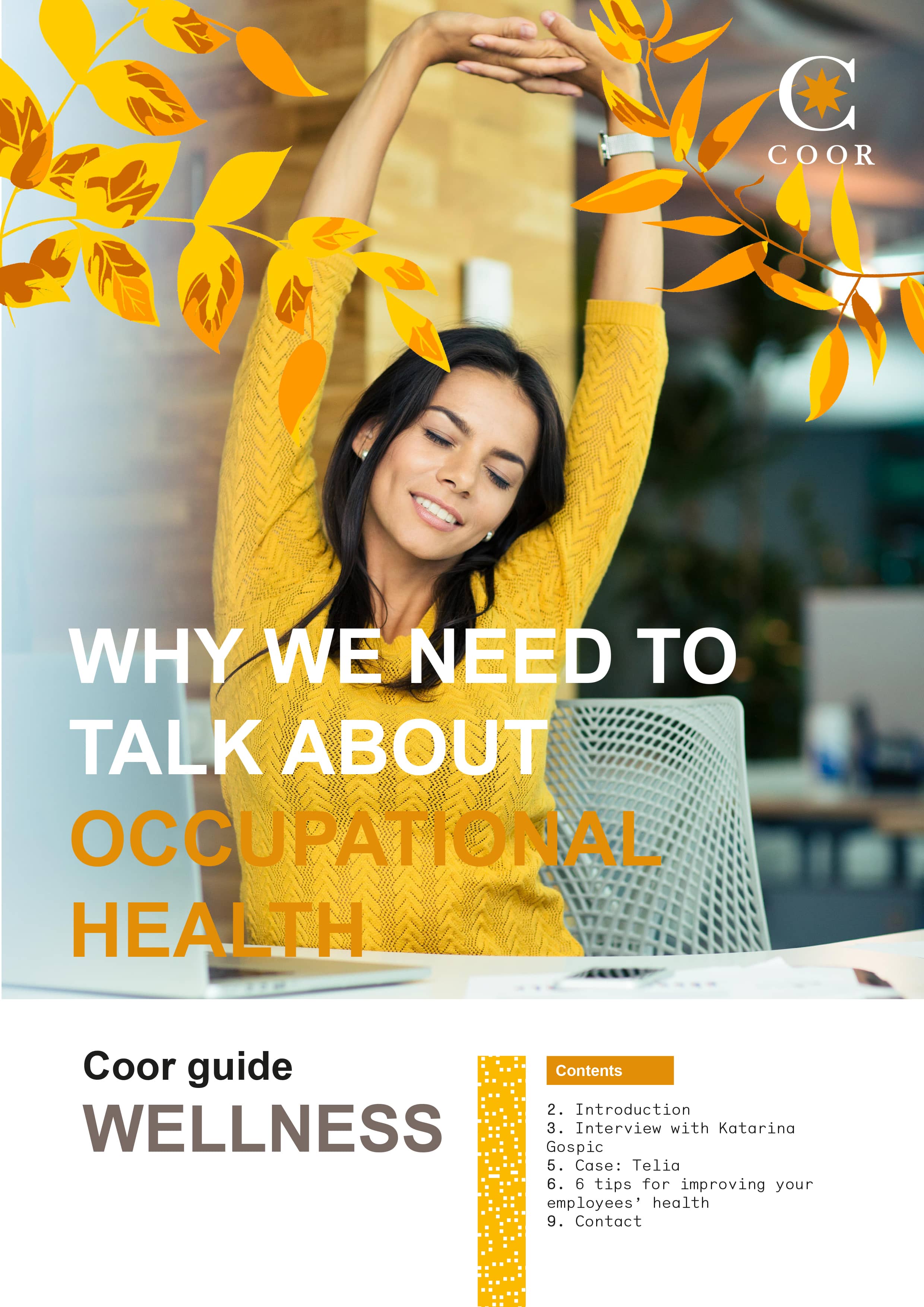Telia is Sweden’s largest telecom operator, both in terms of turnover and number of customers. Telia has Sweden’s most extensive mobile network infrastructure, with a GSM network that covers nearly 100 percent of the population and 75 percent of the country’s area. Because Telia is one of Sweden’s largest companies and provides jobs for so many people, and is also an organization that many Swedes have some sort of connection with, public health issues are central to its operations.
“It’s nothing new really; we’ve been working with occupational health and safety for many years. But recently there have been exciting developments in this area. Managing stress and finding recovery are two of society’s greatest challenges. It’s important to remember that stress is, in fact, a neutral reaction which can sharpen your performance in small doses. However, as an employer we need to keep up with the latest advances. We must offer employees a wide spectrum of ways to find recovery and combat negative stress,” explains Telia’s HR specialist Vibeke Stadling.
Long-term employee health
“I’d say we’re at the forefront with regard to our vision of occupational health and safety. This is partly because we aim to inspire other Swedish organizations, and partly because we aim to be an attractive employer. We want our employees to see Telia as a company that cares about people. I think the most important thing when working with occupational health is for each company to have a strategy for tackling these issues and to be able to justify the choices it makes. For instance, the reason a company buys exercise passes for its employees is because it cares about their long-term health. As an employer, we want our employees to perform well at work, but we also want them to enjoy good health and quality of life outside work.”
Health innovations
When it comes to health innovations, it’s said that we’re in the middle of a transition towards more “human” services that before. Whereas in the past we were inspired by artificial intelligence, today we tend to be more inspired by people and the environment. Does Telia's development as a company follow this trend?
“Yes, definitely. When we developed services in the past, we placed less emphasis on people than we do today. We’re currently working on a service in this area that says quite a lot about how you can take employee health into consideration. The concept is similar to Pokémon Go. When employees walk up and down the stairs at work, various visual experiences are displayed on their mobile phone. Because we know that our employees frequently use the stairs, we aim to create visualizations of exactly what they need on that day and in that place, on their mobile phones. The employee might need inspiration, in which case we can transform the stairwell into a rock concert. We hope this will encourage them to move around more, as well as provide a sense of calm tailored to the individual’s needs.”
Responsibility for wellbeing at work in concrete terms
“Working with wellbeing at work might be just small initiatives, like informing our employees that there are quiet zones on certain floors where they can put on a pair of VR glasses and meditate for a few minutes. Or we might take more active initiatives like conducting health reviews, developing digital platforms where they can track their development, perhaps even making this a shared activity for everybody in the office. As a tool, we use an annual health wheel which we divide into different health phases to help everybody take part.”
Courses with a wellbeing coach
“At Telia we recruit wellbeing coaches. This means that employees are invited to sign up for courses in health and motivation. Then they become ambassadors for our annual health wheel. When using the tool, we divide the year into quarters with different types of health initiatives. For example, we recently held a cycling week, when we invited a bicycle mechanic to one of our offices to help employees with their bicycles. Many people wonder what an employer has to do with their health. But actually the employer is their everyday environment. This means we need to take responsibility for each individual’s health based on their current needs and situation. I believe the future is in solutions tailored to people’s individual needs.”


